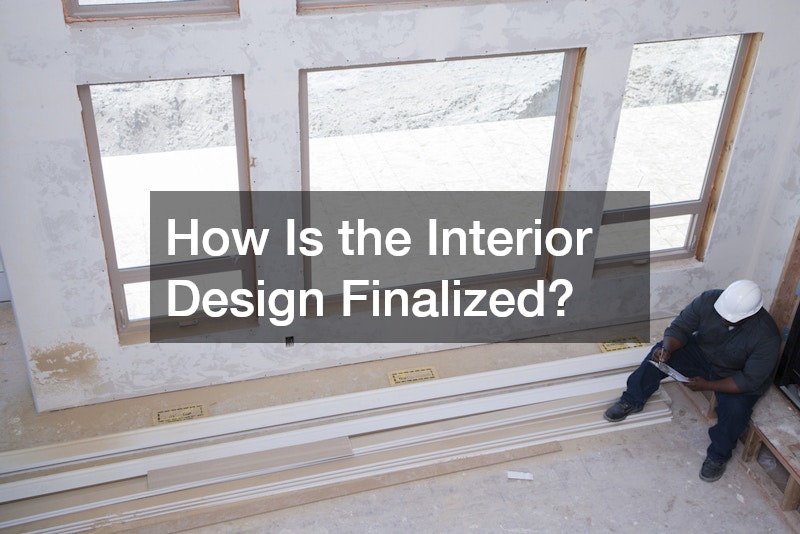Building a luxury home is a sophisticated process that requires precision, planning, and collaboration with experienced professionals. Every element, from the foundation to the finishing touches, must be executed with care to create a residence that reflects the homeowner’s vision. Constructing a high-end home involves engaging specialized services such as residential roofers, local waterproofing contractors, and excavation companies to ensure structural integrity, aesthetic appeal, and long-term functionality. In addition, working with a crane company, commercial plumbers, and local lumber services guarantees that both heavy materials and intricate design features are handled professionally. This article provides an in-depth guide to constructing a luxury home, highlighting key considerations, steps, and professionals involved in the process.
What Defines a Luxury Home?
Defining Features of a Luxury Home
Luxury homes are distinguished by exceptional quality, thoughtful design, and exclusive amenities. They often feature expansive living spaces, high ceilings, and premium finishes such as marble countertops, hardwood flooring, and designer cabinetry. Dormers can be incorporated to increase natural light and add architectural interest, particularly in upper-level rooms or attic spaces. High-end homes also prioritize lifestyle features, including home theaters, wine cellars, and spa-like bathrooms, delivering comfort and convenience at every level. Quality craftsmanship, attention to detail, and durable materials differentiate luxury construction from standard residential building.
The Role of Location in Luxury Homes
Location remains a defining factor in a property’s luxury status. Waterfront properties, hilltop estates, and urban residences in highly sought-after neighborhoods all carry a premium. Proximity to cultural centers, quality schools, and community amenities can further elevate a home’s value. Working with local lumber services or nearby contractors often streamlines logistics and reduces project delays, especially when sourcing high-quality materials for a custom home in a prime location. Choosing the right location ensures both immediate enjoyment and long-term investment potential.
Architectural Styles and Customization
Luxury homes often embody a unique architectural vision, blending style with functionality. Modern minimalist designs, classic European-inspired estates, and transitional homes each offer different appeals. Dormers, for instance, can enhance the exterior aesthetic while providing practical interior benefits, such as additional living space and improved ventilation. Architects and designers work closely with homeowners to customize layouts, facades, and interiors, ensuring a distinctive presence and a tailored living experience.
Market Trends and Expectations
The luxury home market evolves with lifestyle preferences, environmental concerns, and technological advancements. Open-concept floor plans, indoor-outdoor living spaces, and sustainable construction are increasingly popular. Homebuyers expect energy-efficient systems, advanced home automation, and integrated security solutions. Engaging experienced professionals such as residential roofers and commercial plumbers ensures these expectations are met while maintaining structural quality and aesthetic appeal.
Luxury vs. Non-Luxury Construction Standards
Luxury construction emphasizes precision, quality, and longevity. Unlike standard homes, high-end residences demand superior materials, meticulous craftsmanship, and attention to every detail, from roofing to interior finishes. Local waterproofing contractors, excavation contractors, and crane companies are often involved to guarantee the foundation and structural elements are executed flawlessly. Every aspect, from plumbing and electrical systems to roofing and landscaping, undergoes strict oversight to ensure compliance with both personal standards and building codes.
How Do I Choose the Right Architect and Designer?
Determining Your Style and Preferences
Selecting an architect or designer begins with identifying your personal style, functional needs, and desired aesthetic. Do you prefer contemporary open spaces, traditional elegance, or a hybrid of both? Visual inspiration and references from completed luxury homes can help articulate your vision to professionals. Engaging an architect early allows integration of essential features like dormers, expansive windows, or specialty roofing elements.
Researching and Shortlisting Professionals
Researching qualified architects and designers is key. Review portfolios, request references, and verify past projects, particularly luxury homes with similar complexity. Professionals who have worked closely with residential roofers, excavation companies, or crane companies demonstrate experience managing multiple trades and heavy equipment logistics. Shortlisting those with proven expertise ensures your project benefits from both creativity and technical competence.
Conducting Interviews and Evaluating Proposals
Interviews provide insight into the architect’s or designer’s approach, communication style, and problem-solving capabilities. Evaluating proposals includes reviewing design concepts, timelines, and budget projections. Professionals familiar with coordinating a commercial plumber, local waterproofing contractors, and septic tank installations can anticipate potential challenges, streamlining the construction process and reducing costly delays.
Understanding Fees and Contracts
Luxury home design often involves varying fee structures. Architects may charge a fixed fee, an hourly rate, or a percentage of the total construction cost. Reviewing contracts carefully is essential to clarify scope, timelines, and responsibilities. Explicit agreements with contractors, crane companies, and lumber suppliers ensure transparency and reduce risk, while insurance services can provide additional protection against unexpected challenges.
Establishing Communication and Collaboration
Effective communication among all stakeholders is critical. Regular updates, site meetings, and collaboration platforms help coordinate complex tasks. Working seamlessly with excavation contractors, residential roofers, commercial plumbers, and local waterproofing contractors ensures that both design intent and construction quality are maintained. A clear communication framework minimizes errors and fosters a cohesive approach to building a luxury home.
What Are the Key Steps in the Planning Process?
Site Analysis and Feasibility Studies
Before construction begins, the site must be evaluated for topography, soil quality, drainage, and accessibility. Engaging an excavation company or excavation contractor ensures accurate site surveys and proper grading. Feasibility studies assess whether the chosen lot can accommodate the desired design, including considerations for septic tank installations, utility connections, and foundation requirements.
Developing the Initial Concept and Design
The design phase translates vision into detailed plans. Architects integrate features like dormers, premium roofing materials, and spatial layouts that maximize natural light and functionality. Collaboration with residential roofers, local lumber services, and crane companies ensures that structural elements and heavy materials are incorporated efficiently and safely. Early-stage planning sets the tone for quality and ensures compliance with building regulations.
Obtaining Permissions and Building Permits
Luxury homes often require multiple permits, including zoning approvals, environmental clearances, and construction permits. Local authorities review plans to confirm that they comply with codes and safety standards. Working with professionals who understand local regulations, including excavation contractors and commercial plumbers, facilitates smoother permit acquisition and reduces project delays.
Budgeting and Financial Planning
Budgeting for a luxury home goes beyond construction costs. Allocating funds for premium materials, specialized labor, technology integration, and interior finishes is essential. Incorporating costs for local waterproofing contractors, crane companies, and insurance services provides a comprehensive view of project expenditure, helping homeowners avoid unexpected financial strain.
Project Scheduling and Timeline Management
Scheduling is crucial to coordinating multiple trades and suppliers. Construction timelines must accommodate excavation, foundation work, roofing, plumbing, electrical systems, and interior finishes. Crane companies are often essential for moving heavy materials, while residential roofers and local lumber services ensure timely installation of structural components. Well-managed schedules reduce delays and maintain momentum throughout the construction process.
How Is Land Prepared for Construction?
Conducting Site Surveys and Soil Testing
Site preparation begins with surveying and soil analysis. Excavation contractors perform soil tests to determine load-bearing capacity, drainage requirements, and potential environmental concerns. Accurate surveys guide foundation design, septic tank installations, and placement of essential utilities, ensuring long-term stability.
Clearing and Grading the Construction Site
Clearing vegetation and leveling the terrain is a critical step. Excavation companies and local lumber services coordinate the removal of trees, debris, and old structures, while grading ensures proper drainage and foundation support. These preparations create a safe and functional environment for construction activities.
Installing Utilities and Infrastructure
Utility installation, including water, gas, electrical, and sewer systems, forms the backbone of a new home. Commercial plumbers handle complex plumbing layouts, while excavation contractors assist with trenching for underground connections. Proper coordination with local waterproofing contractors and septic tank installations ensures that infrastructure is both functional and durable.
Environmental and Zoning Considerations
Compliance with environmental regulations protects natural resources and ensures legal adherence. Luxury home builders must consider runoff management, soil erosion, and native landscaping. Zoning rules dictate setbacks, height restrictions, and permissible structures, which must be integrated into the design from the outset.
Ensuring Compliance with Local Regulations
Adhering to building codes and local regulations protects homeowners and contractors from fines or legal issues. Working with experienced excavation contractors, residential roofers, and commercial plumbers ensures that every stage of construction meets safety standards and municipal requirements.
What Materials Are Used for Luxury Home Construction?
Choosing High-Quality Building Materials
Luxury homes utilize premium materials for both structure and aesthetics. Hardwood, marble, stone, and high-grade metals provide durability and visual appeal. Local lumber services can supply quality wood that meets design specifications, while crane companies facilitate the movement of large or heavy building components to the site safely.
Sustainability and Green Building Practices
Sustainability is increasingly important in luxury construction. Using eco-friendly materials, energy-efficient systems, and water-saving technologies helps reduce the environmental footprint. Local waterproofing contractors contribute to sustainable construction by preventing water damage, reducing repair needs, and extending the home’s lifespan.
Luxury Finishes and Interior Details
The choice of finishes sets a luxury home apart. Custom cabinetry, designer lighting, high-end flooring, and intricate moldings create a sense of refinement. Dormers, integrated skylights, and other architectural details enhance both the exterior and interior experience, while commercial plumbers and residential roofers ensure that functional systems complement the design.
Innovations in Building Technology
Modern luxury homes incorporate smart home technologies, advanced HVAC systems, and energy-efficient appliances. These innovations enhance comfort, convenience, and sustainability, aligning with the expectations of today’s high-end homeowners.
Supplier Selection and Supply Chain Management
Reliable suppliers for lumber, stone, fixtures, and specialized materials are essential. Working with local lumber services and reputable distributors ensures timely delivery and consistent quality, minimizing construction delays and maintaining budget control.
What Is the Role of a General Contractor?
Responsibilities and Duties of General Contractors
General contractors oversee every aspect of construction, from coordinating subcontractors to monitoring progress. They manage schedules, quality control, and adherence to design plans, ensuring that the project is executed efficiently and effectively.
Managing Subcontractors and Labor
A general contractor coordinates residential roofers, commercial plumbers, excavation contractors, and other specialized trades to maintain workflow and ensure quality standards. Their oversight guarantees that all tasks are completed on time and in line with the homeowner’s expectations.
Overseeing Construction Quality and Safety
Quality control and safety are central to luxury home construction. Contractors ensure that materials, finishes, and installations meet stringent standards. Crane companies, for example, must follow strict safety protocols when moving heavy building components.
Cost Control and Risk Management
Budget adherence is crucial. General contractors monitor expenses, coordinate with suppliers, and manage contingencies to prevent cost overruns. Insurance services are often engaged to mitigate risk, covering potential accidents or construction issues.
Communicating with Clients and Stakeholders
Clear communication ensures that homeowners remain informed about progress, challenges, and changes. General contractors act as the central point of contact between architects, designers, and trades, maintaining cohesion across all aspects of the project.
How Is the Interior Design Finalized?
Aligning Design with Lifestyle Needs
Interior design should reflect the homeowners’ lifestyle, needs, and preferences. Spaces are planned for comfort, functionality, and aesthetic appeal, ensuring every room serves its intended purpose.
Choosing Furniture and Decor Elements
Selecting furniture, artwork, and decorative items requires balancing style, comfort, and practicality. Custom pieces complement the home’s architecture and enhance the overall atmosphere.
The Role of Color and Lighting
Color schemes, lighting, and natural light play a crucial role in creating ambiance. Dormers and large windows can bring in sunlight, enhancing interior design and energy efficiency.
Custom Features and Personalization
Luxury homes often feature bespoke elements such as built-in cabinetry, wine cellars, and spa-style bathrooms. Working with commercial plumbers and residential roofers ensures these custom features are installed safely and functionally.
Ensuring Cohesive Design Throughout the Home
Consistency in design creates a seamless experience across all rooms. Coordinating materials, finishes, and architectural elements ensures a unified, luxurious aesthetic.
What Are the Latest Trends in Luxury Home Automation?
Smart Home Technologies
Smart home integration includes lighting, climate control, and security systems that can be managed remotely. These features improve convenience, energy efficiency, and safety.
Integration of Security Systems
Advanced security solutions, including surveillance cameras and alarm systems, provide peace of mind for homeowners. These systems are often integrated with smart home technology for seamless control.
Automating Energy Efficiency
Automated HVAC systems, lighting, and water management reduce energy consumption. Collaboration with commercial plumbers and local waterproofing contractors ensures systems are efficient and reliable.
Entertainment and Media Solutions
High-end audio-visual setups, home theaters, and media rooms enhance luxury living. Professional installation guarantees both quality and functionality.
Future-Proofing with Technology Upgrades
Planning for future upgrades ensures the home remains technologically current. Flexible wiring, expandable automation platforms, and modular systems allow for continuous innovation without major renovations.
How Is Environmental Impact Managed?
Incorporating Energy-Efficient Solutions
Energy-efficient HVAC systems, lighting, and insulation reduce environmental impact. Residential roofers and general contractors ensure that energy performance aligns with sustainable building practices.
Water Conservation and Management
Septic tank installations, rainwater harvesting, and efficient plumbing reduce water usage. Local waterproofing contractors help prevent leaks and preserve water efficiency.
Building with Sustainable Materials
Sustainable sourcing, including responsibly harvested lumber from local lumber services and recycled materials, supports eco-conscious construction without compromising luxury.
Waste Reduction and Recycling Practices
Recycling construction debris and minimizing waste during excavation and building processes helps reduce environmental impact. Excavation companies play a role in safely disposing of removed soil and debris.
Achieving Green Building Certifications
Pursuing certifications such as LEED or ENERGY STAR demonstrates commitment to sustainability and can increase property value. Integration of smart systems, sustainable materials, and efficient site management supports certification goals.
What Happens During the Final Walkthrough?
Inspecting the Finished Home
A thorough inspection ensures that every element, from dormers to roofing, meets design and quality standards. Residential roofers and local waterproofing contractors verify that all exterior components are secure and functional.
Identifying Any Defects or Issues
The final walkthrough highlights defects, incomplete work, or functional issues. Addressing these before moving in prevents future complications and ensures a seamless experience.
Reviewing Home Systems and Operations
Homeowners receive guidance on operating HVAC systems, plumbing, electrical setups, and smart home features. Commercial plumbers and general contractors assist in reviewing complex systems.
Finalizing Documentation and Warranties
All warranties, manuals, and service documentation are compiled. Insurance services may provide additional coverage or guidance to protect the home against future risks.
Handover and Moving In Preparation
Once inspections are complete and documentation finalized, homeowners can prepare to move in. Careful planning ensures that all systems, finishes, and features are operational and ready for use.
Closing Thoughts
Constructing a luxury home requires meticulous planning, expert collaboration, and the integration of high-quality materials and systems. From selecting the right location and architect to coordinating residential roofers, crane companies, excavation contractors, and commercial plumbers, every step influences the success of the project. Attention to design, sustainability, and technology ensures that the finished home offers both luxury and functionality. Engaging experienced professionals and prioritizing detailed planning are essential in turning a dream residence into a reality.







